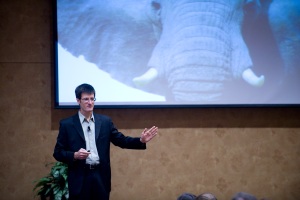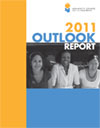How much change can a foundation catalyze by simply – albeit generously – writing checks? Not as much as it could if it also engaged in public policy activities. In fact, public policy work should be viewed as an essential part of a foundation’s efforts, say several members of the Minnesota Council on Foundations.
In our Summer issue of Giving Forum, “Public Policy and Philanthropy: Many Roads Lead to the Same Destination – Change,” John Larsen, trustee and administrator of the John Larsen Foundation, says, “Ultimately, the work of our foundation is about creating real, systemic change, and that can only happen when we start talking to government. Whether you’re a small family foundation like us, or a very large foundation, we all need shifts in public policy in order to achieve really significant lasting social change.”
The challenge is that working to achieve shifts in public policy is often equated with lobbying. And the thought of walking up the steps of the Capitol or testifying before a legislative committee is more than many funders can fathom.
Lobbying, however, is not the sole avenue to influencing public decision making and advocating for causes. Although it is the most recognized public policy engagement tactic, it is only one of 18 distinct policy strategies that Julia Coffman outlines in “A User’s Guide to Advocacy Evaluation Planning,” published by the Harvard Family Research Project.
A “Framework of Public Policy Activities,” which we include in Giving Forum, also includes using electronic outreach and social media, coalition and network building, grassroots organizing, briefings and presentations, polling, pilot projects, research investigating issues and identifying solutions and policymaker education, among others – all of which can impact public decision making, which ultimately shapes policy development, approval and implementation.
A foundation can engage anywhere along the continuum, pursuing those activities that fit its capacity, culture, commitment and comfort levels. A public policy activity that feels right for one foundation may not fit another.
Many foundations choose a combination of strategies, leveraging their resources to: raise awareness of where the public stands on particular issues; bring together divergent points of view to first converse then collaborate; empower community members to advocate on their own behalf by providing technical assistance; increase the capacity of nonprofits to mobilize others; identify messages that resonate with policymakers and the public; determine what would happen if the status quo was allowed to prevail; aggregate what is known already about an issue and put that to work to further discussion; or identify possible solutions and best practices.
These MCF members have each chosen distinct strategies to impact public decision making that fit their capacity, culture, commitment and comfort level. Read more about their work in our just-published Giving Forum:
Lead article:
Southern Minnesota Initiative Foundation: An outgrowth of its grantmaking and programmatic activities, community dialogues and business loan work, SMIF’s public policy activities, including building coalition and networks and partnering with the media to draw attention to the issues and how public policy could impact the success the foundation seeks.
The Minneapolis Foundation: As part of the School Readiness Funders Coalition, a group of funders with diverse strengths and abilities in advocacy work, The Minneapolis Foundation brings to the group its ability to lobby and testify at legislative hearings to advocate for the coalitions “Agenda to Achieve Learning Readiness by 2020.”
John Larsen Foundation: When awarding grants supporting work toward LGBT equality, the foundation considers if educating policymakers is an end goal of the nonprofit’s work and if the organization has a research plan and a track record of communicating those findings to policymakers.
Indian Land Tenure Foundation: Striving to ensure that lands within the original boundaries of reservations is acquired, owned and managed by Indians, the foundation views education about land issues a priority, as well as identification then pursuit of strategies for achieving legal reform.
Women’s Foundation of Minnesota: The explosion of social media has created a new landscape for the foundation to leverage its expertise to educate, engage and broaden its reach to shift attitudes, behaviors and institutions that limit equality for women and girls.
Voices of Philanthropy articles:
Bill and Melinda Gates Foundation: Identifying partners best qualified to successfully implement strategies and measuring what’s important to guide future initiatives drive the foundation’s advocacy work.
Initiative Foundation: Based on the belief that local people are the key to strengthening communities, the foundation increases civic engagement by providing training, technical assistance, resource referral and grants to help citizen-based teams develop and carry out strategic plans.
While these efforts are diverse, the common thread amongst them is the recognition by these foundations that strategically developing goals to influence public decision making and intentionally engaging in public policy activities and advocacy work can move systems change forward.
– Chris Murakami Noonan, MCF communications associate
 Our governor presented his budget earlier this week (no, that’s not him in the photo). The word “gloomy” doesn’t even begin to describe the overwhelming feeling of dread that lies ahead as our elected officials start searching for a solution to fix a $6.2 billion deficit.
Our governor presented his budget earlier this week (no, that’s not him in the photo). The word “gloomy” doesn’t even begin to describe the overwhelming feeling of dread that lies ahead as our elected officials start searching for a solution to fix a $6.2 billion deficit.


 Posted by Chris Noonan
Posted by Chris Noonan 


